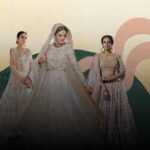Wedding Dresses: The Timeless Symbol of Love and Celebration
Few garments hold as much significance as the wedding dresses worn on a bride’s big day. Across cultures and centuries, the wedding dress has become a symbol of purity, prosperity, and personal identity. It is not just fabric sewn together—it represents dreams, emotions, and the promise of a lifetime bond.
From elaborate lehengas in South Asia to classic white gowns in the West, wedding dresses reflect both cultural heritage and modern trends. Every bride envisions walking down the aisle in attire that radiates elegance, confidence, and individuality.
The Evolution of Wedding Dresses
Historically, brides wore dresses that symbolized status and tradition. In the West, white gowns became popular after Queen Victoria wore one in 1840, setting a trend that still continues. In Asia, red and gold have been traditional bridal colors for centuries, representing prosperity, fertility, and happiness.
Today, bridal fashion merges the best of both worlds—honoring tradition while embracing innovation. Brides now experiment with styles, colors, and fabrics, tailoring their look to suit personal taste and cultural roots.
Why Wedding Dresses Matter
A Symbol of New Beginnings
A wedding dress signifies a fresh journey and the sacredness of marriage.
The Center of Attention
No matter how grand the décor, the bride’s dress always takes the spotlight.
Personal Expression
Dresses showcase a bride’s personality, from minimalist elegance to ornate grandeur.
Emotional Connection
Many brides preserve their wedding attire as heirlooms, passing it to future generations.
Popular Styles of Wedding Dresses
Wedding fashion today offers endless choices. Some timeless styles include:
Ball Gowns: Full skirts, fitted bodices—ideal for a fairy-tale wedding.
A-Line Dresses: Universally flattering with a flowy yet structured design.
Mermaid Gowns: Hugging curves before flaring out dramatically.
Sheath Dresses: Sleek, minimalist, and modern.
Lehengas (South Asia): Skirt, blouse, and dupatta with heavy embroidery.
Sarees: Draped elegance symbolizing tradition and grace.
Fusion Outfits: Combining elements of Western gowns and ethnic attire.
Fabrics that Define Wedding Dresses
The choice of fabric plays a big role in both comfort and appeal. Brides often choose:
Silk: Regal and traditional.
Satin: Smooth and luxurious.
Tulle: Adds volume and dreaminess.
Organza: Sheer yet structured.
Velvet: Rich and perfect for winter weddings.
Lace: Romantic and delicate.
Brocade: Ornate, traditional, and ideal for lehengas.
Wedding Dress Colors Across Cultures
White: Symbolizes purity in Western weddings.
Red: Represents prosperity and luck in India and China.
Gold: Luxury and celebration across many cultures.
Pastels: Modern brides embrace soft pinks, lavender, and mint.
Ivory & Champagne: Elegant alternatives to bright white.
Brides today often personalize their dress colors, balancing tradition with individuality.
Embellishments and Detailing
The charm of wedding dresses lies in their details. Popular enhancements include:
Beadwork & Sequins: Sparkling elegance.
Embroidery: From zardozi to lace appliqué.
Pearls & Crystals: A touch of luxury.
Mirror Work: Festive and radiant in ethnic wear.
Layering & Drapes: Creating drama and volume.
Accessories to Complement Wedding Dresses
No bridal look is complete without accessories:
Veils/Dupattas: Symbolic and stylish.
Jewelry: Pearls, diamonds, kundan, or polki depending on the dress.
Headpieces: From tiaras to maang tikkas.
Shoes: Elegant yet comfortable for long hours.
Clutch/Potli Bags: Functional and stylish.
Modern Trends in Wedding Dresses
Fashion evolves, and bridal wear keeps pace. Some current trends include:
Minimalist Gowns: Clean cuts, understated glamour.
Pastel Lehengas & Sarees: Replacing traditional bright hues.
Cape & Jacket Styles: Adding layers of drama.
Personalized Embroidery: Initials or love quotes stitched into dresses.
Sustainable Fashion: Eco-friendly fabrics and ethical production.
Mix & Match Looks: Brides blending traditional and modern attire.
How to Choose the Perfect Wedding Dress
Know Your Body Type: Pick silhouettes that flatter your figure.
Consider the Season: Velvet and brocade for winters, chiffon and georgette for summers.
Match Venue & Theme: A beach wedding requires lighter fabrics, while a palace wedding allows grandeur.
Try Before Finalizing: Experiment with multiple styles.
Budget Wisely: Balance between dream design and affordability.
Coordinate with Groom’s Outfit: Creates harmony in pictures and ceremonies.
The Emotional Value of Wedding Dresses
A wedding dress is not just worn—it’s cherished. Many brides carefully preserve their attire, treating it as a family heirloom. Years later, the dress becomes a reminder of love, commitment, and unforgettable memories. Some brides even repurpose their wedding attire into new garments, ensuring it lives on.
The Rise of Sustainable Wedding Dresses
As awareness grows, many brides are opting for sustainable options:
Dresses made from organic cotton, bamboo, or recycled fabrics.
Renting bridal gowns to reduce waste.
Supporting local artisans for handwoven, ethical fabrics.
This shift ensures beauty with responsibility, allowing brides to look radiant while respecting the planet.
Conclusion
The wedding dresses of today are not just about tradition—they are about personalization, style, and meaning. From classic ball gowns to modern lehengas, from minimalist sheaths to ornate sarees, bridal fashion now offers endless opportunities for self-expression.
A wedding dress is more than attire—it is a lifelong memory stitched in fabric. It tells a story of culture, love, and individuality. Whether traditional or modern, extravagant or minimalist, the right wedding dress makes a bride feel like the truest version of herself on her most important day.

